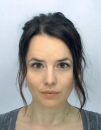Laser Physics
Data is displayed for academic year: 2023./2024.
Course Description
Theory of light-matter interaction. Quantum model of atom. Spectral line shapes. Physical principles of laser. Density of cavity modes. Laser resonators. Characteristics of laser radiation. Different types of lasers: according to the operating principles (continuous, pulsed); according to the type of optical amplifier (lasers with gaseous medium, solid state lasers, fiber lasers, semiconductor lasers, dye lasers, free-electron lasers). Application of lasers in physics and engineering.
Study Programmes
University undergraduate
[FER3-EN] Computing - study
Elective Courses
(6. semester)
[FER3-EN] Electrical Engineering and Information Technology - study
Elective Courses
(6. semester)
Learning Outcomes
- Describe the interaction of light with matter using classical and semi-classical theories.
- Explain the operation of laser resonator and laser theshold
- Explain the special properties of laser radiation compared to more conventional sources.
- Explain the meaning of Q-switching and mode-locking in puls lasers.
- Explain how the choice and characteristics of laser materials and resonator determine the ultimate behaviour of a laser.
- Analyze the properties of laser and determine possible applications.
- Evaluate the multi-disciplinary nature of engineering systems.
Forms of Teaching
Lectures
The examples are solved during the lectures.
Seminars and workshopsSeminar is mandatory.
LaboratoryLaboratory experiments are on Department of applied physics. Laboratory is mandatory.
Grading Method
| Continuous Assessment | Exam | |||||
|---|---|---|---|---|---|---|
| Type | Threshold | Percent of Grade | Threshold | Percent of Grade | ||
| Laboratory Exercises | 0 % | 24 % | 0 % | 24 % | ||
| Seminar/Project | 0 % | 16 % | 0 % | 16 % | ||
| Mid Term Exam: Written | 0 % | 30 % | 0 % | |||
| Final Exam: Written | 0 % | 30 % | ||||
| Exam: Written | 0 % | 60 % | ||||
Week by Week Schedule
- Light absorption and emission.
- Light absorption and emission.
- Einstein coefficients. Selection rules for absorption and emission.
- Absorption coefficient. Population inversion.
- Line profile and half-width of spectral lines. Lorentz model.
- Doppler broadening of spectral lines.
- Electromagnetic waves in resonator. Density of modes.
- Midterm exam
- Modes of open resonators. Different types of resonators. Fabry-Perot resonator. Fundamental Gauss mode. Threshold condition. Amplification and losses in resonators. The quality factor of resonators Q. Feedback amplification in lasers.
- Single-mode and multi-mode lasers. Selection of single modes by optical prism, grating, and Fabry-Perot etalon. Spectral resolution of optical elements.
- Characteristics of laser light (directionality, space and time coherence). Pulse lasers (Q-switching, mode-locking, gain switching).
- Gas lasers. Physical principles of atomic (He-Ne), ionic (Ar+ ion), molecular (CO2, N2), chemical, and excimer lasers.
- Solid-state lasers. Physical principles of crystal and glass lasers (ruby, Nd-Yag). Physical principles of fiber lasers. Resonators in fiber lasers.
- Physical principles of semiconductor lasers. Physical principles of free-electron and x-ray lasers. Holography. Applications of holography.
- Final exam
Literature
V. Henč-Bartolić, L. Bistričić (2001.), Predavanja i auditorne vježbe iz fizike lasera, Element
Karl F. Renk (2012.), Basics of Laser Physics For Students of Science and Engineering, Springer-Verlag Berlin Heidelberg 2012., Springer Berlin Heidelberg
Wolfgang Demtröder (2010.), Atoms, Molecules and Photons, Springer Berlin Heidelberg
For students
General
ID 223348
Summer semester
5 ECTS
L1 English Level
L1 e-Learning
45 Lectures
0 Seminar
0 Exercises
12 Laboratory exercises
0 Project laboratory
0 Physical education excercises
Grading System
85 Excellent
70 Very Good
60 Good
50 Sufficient


 Pristupačnost
Pristupačnost
